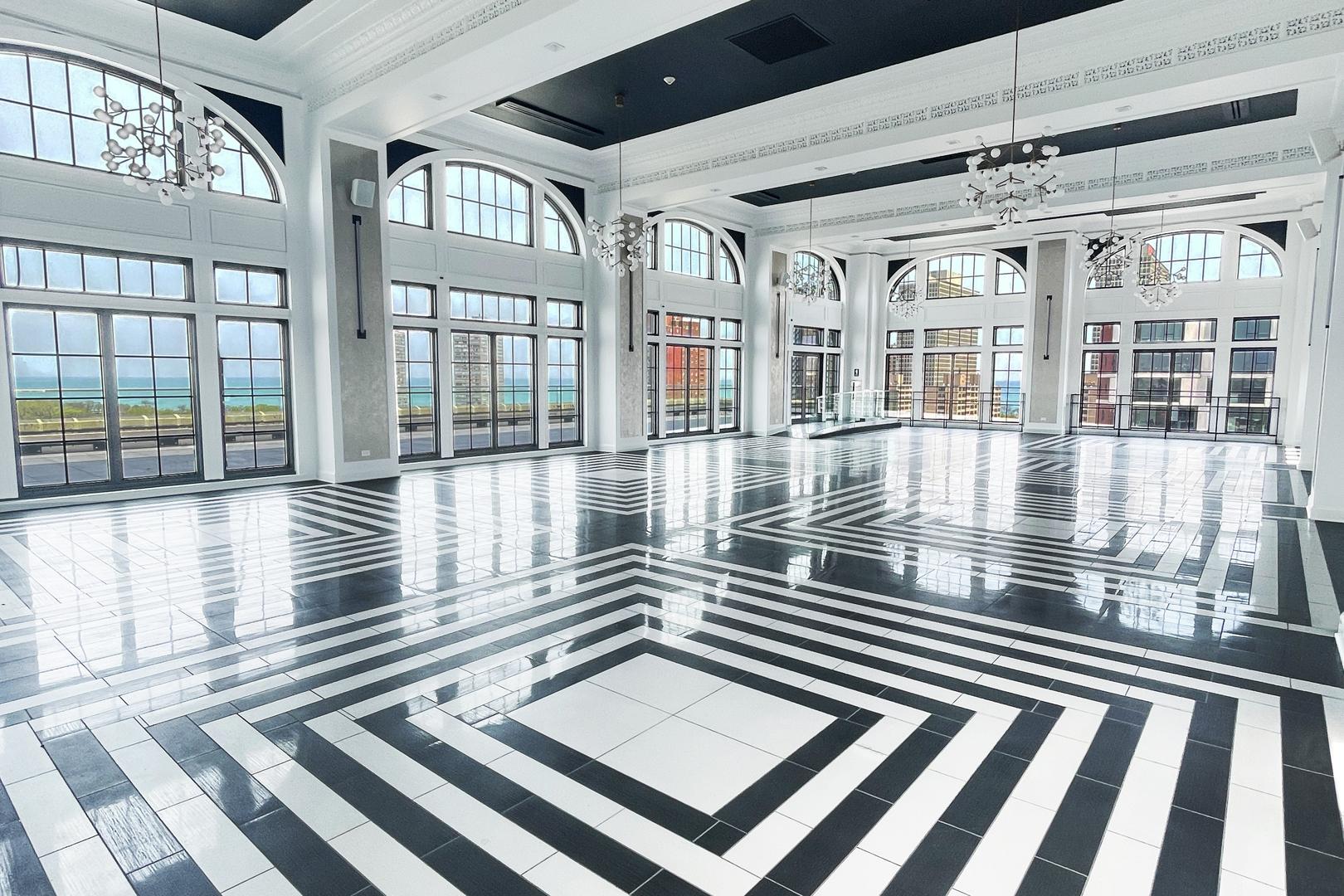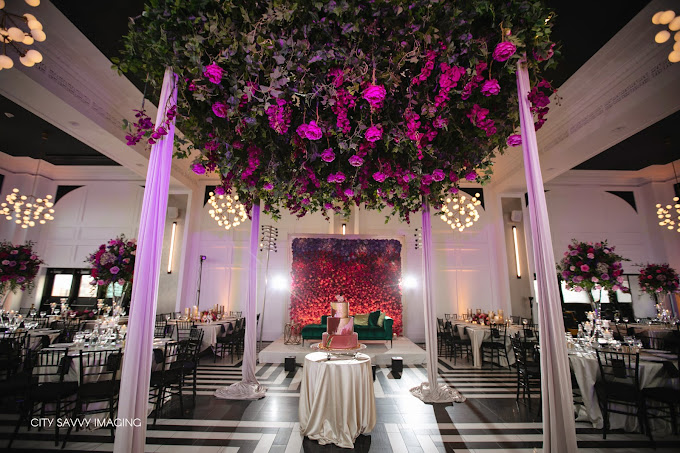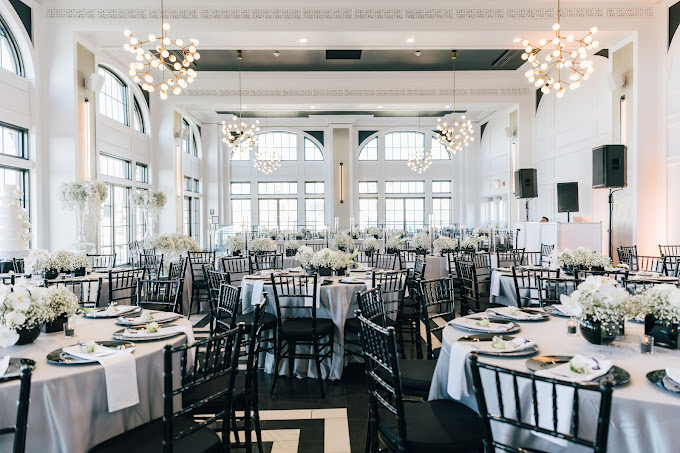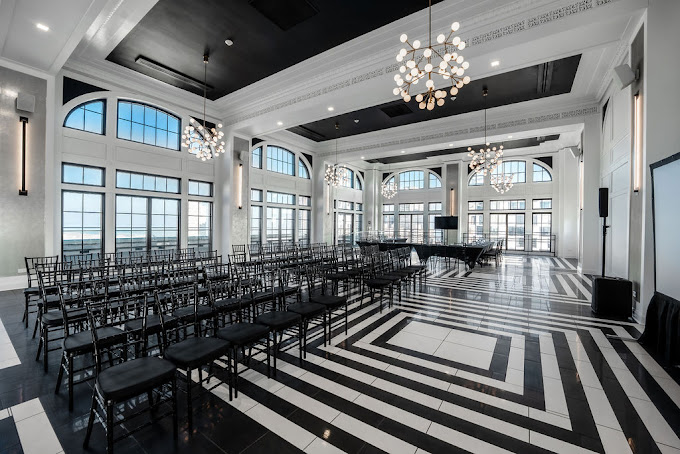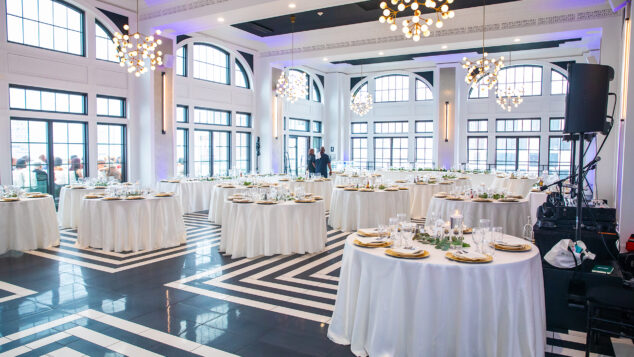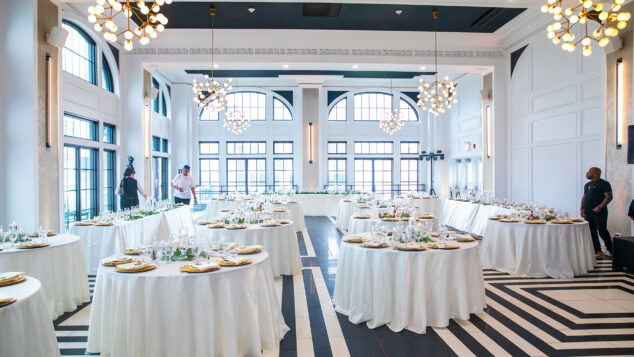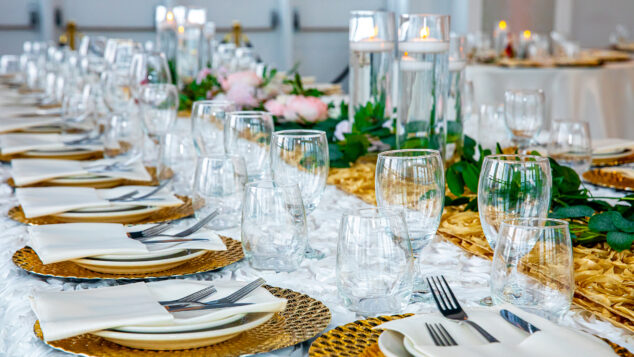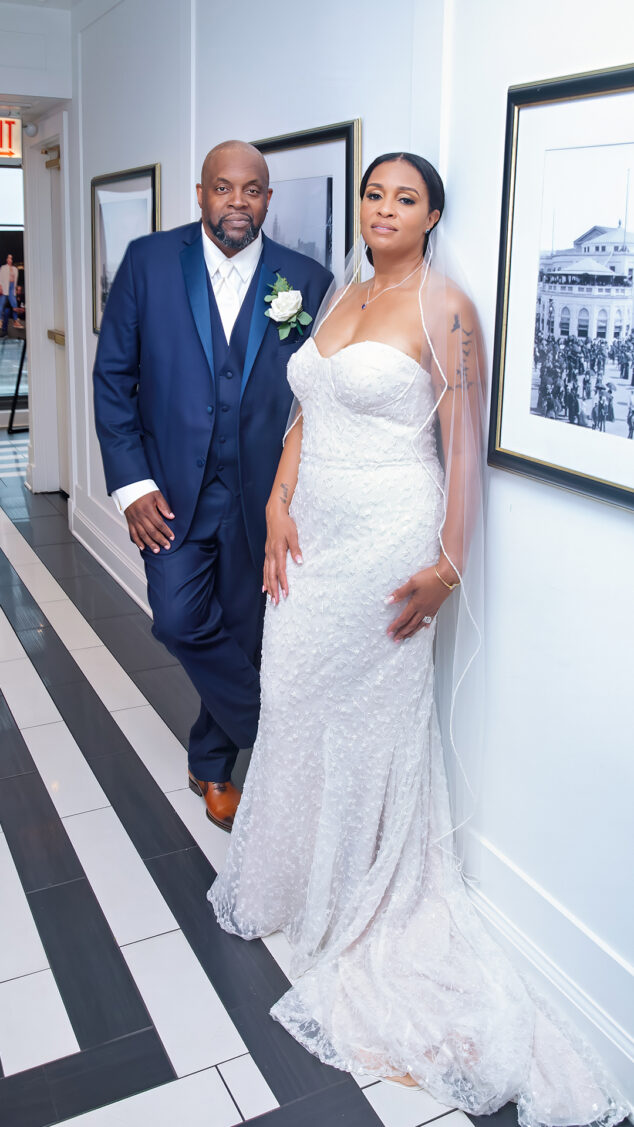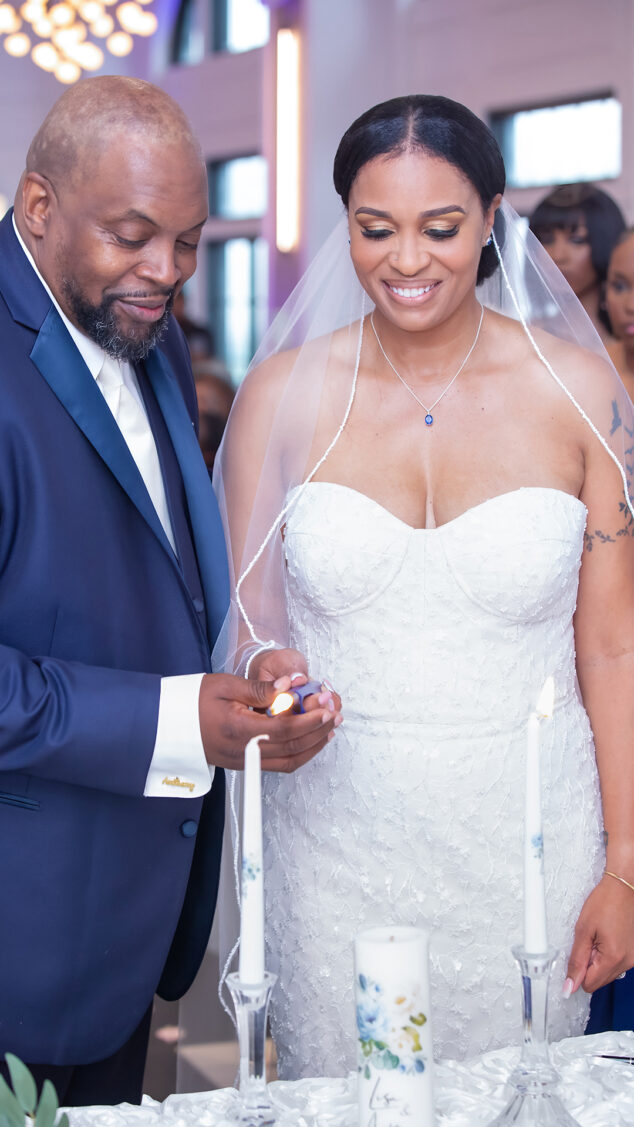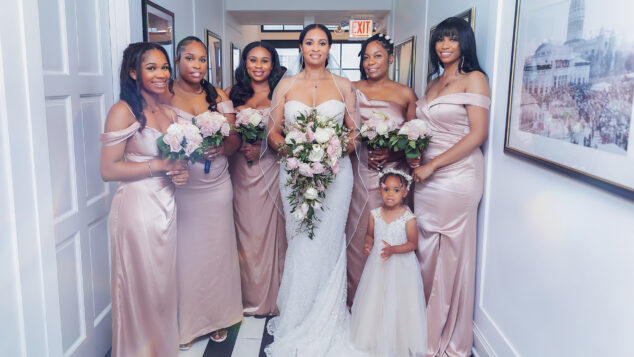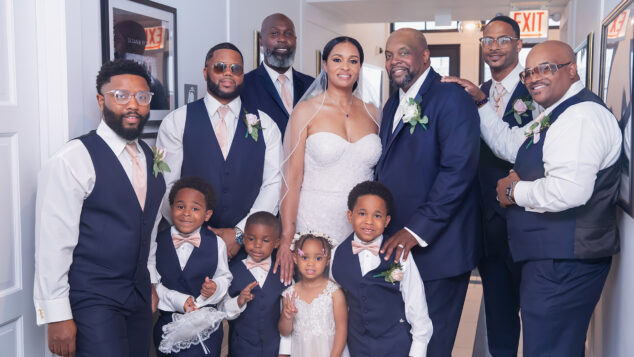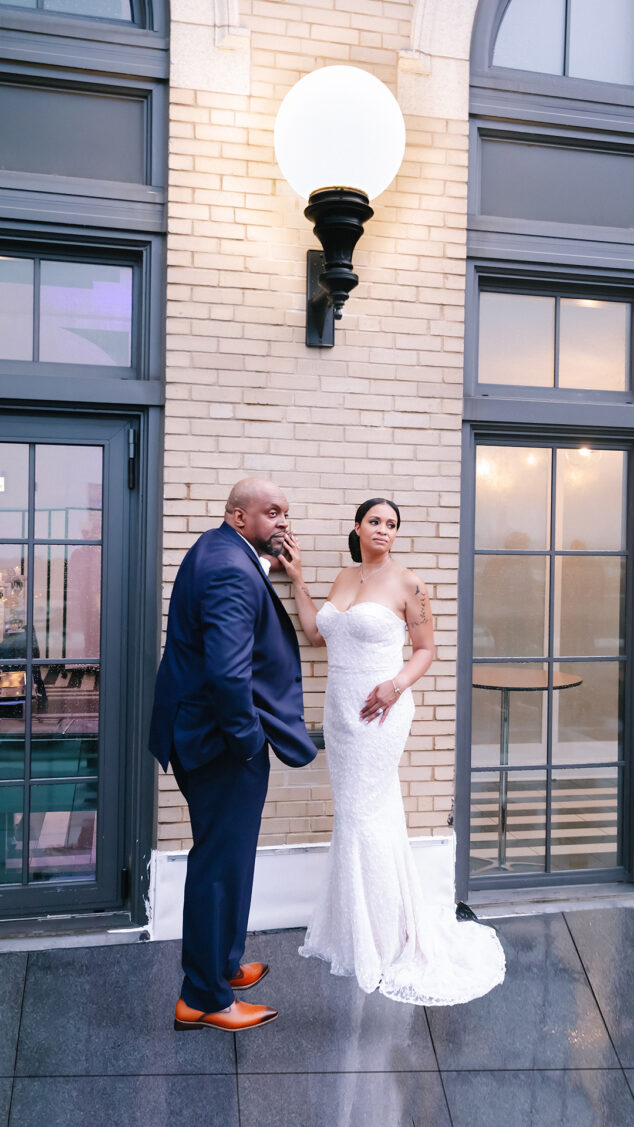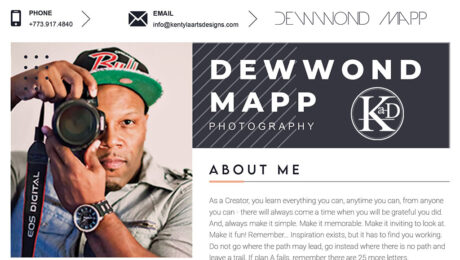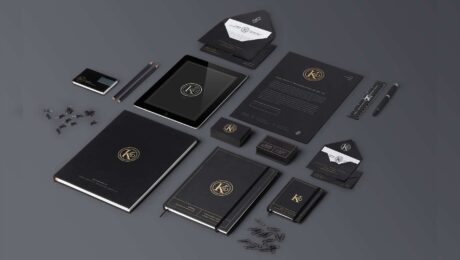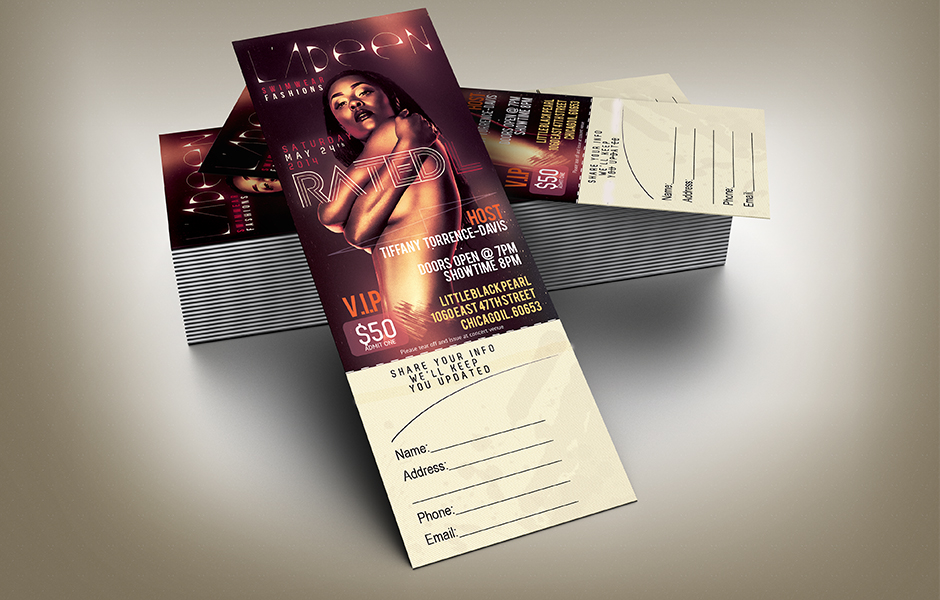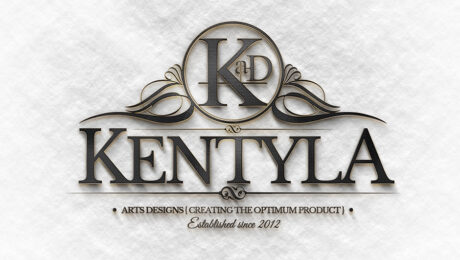A Bride & Groom’s Worse Nightmare
When The Weather Nearly Ruins Your Wedding Day
We’re getting married!
That was the astounding audible that a client uttered to me, while on a call together. With excitement in my heart, I immediately respond, congratulations! Tell me your story and plans for the big day. He(client) went on to provide a little back story of how he and his fiance got to this point. After about ten minutes of blissful chatting, we started to discuss the formalities of his wedding day plans.
He told me that they were planning their wedding for the coming month of July(2023). The wedding was set to take place at one of the newest, upscale venues on the east side of Chicago(The Penthouse in Hyde Park). The venue boasted a gorgeous Terrace with a stunning view over the city, as well as the lakefront. You guys need to see these. The venue is very nice.
The Penthouse
The Walkthrough
Now, generally speaking, when you plan a wedding in the summer months, you’re usually not that concerned when it comes to the weather. You expect it to be hot. It’s mid-summer. That’s a given. There wasn’t a lot of concern with this wedding because the venue had indoor and outdoor areas. The obvious contingency would be… if the weather, for whatever reason didn’t play nice, you just move everything indoors, right? Well… theoretically, that’s correct.
What happens in the case where you have more guests than, well, how can I say this… what the accommodations allow. Yeah!!! So, it becomes somewhat of a rolling-of-the-dice situation… wouldn’t you say? Now, if the weather is nice, this will be a dream day, for sure. You get to celebrate AMAZING accomplishments with all of your family and friends. I mean, what more could you ask for? On the other hand, if by chance, the unforeseen happens… then the obvious is, well… obvious.
This brings me to this post, title. When The Weather Nearly Ruins Your Wedding Day.
Fast forward to the wedding day. Wait!—No! Let’s rewind a bit. The day before the wedding, to be exact. Some call it the walk-through. Let’s contextualize things leading up to the big day. If you’re unfamiliar, traditionally, the wedding party would meet for about an hour or so the day before the wedding to get everyone acclimated to the ceremony’s in/out procession. Now, that’s not the only reason wedding partys meet the day before. The bride and groom may have planned a dinner for the party. Or, they want to make sure that everyone can do the two steps during the procession. Lol. In essence, the sole purpose is to make sure that everyone is on the same page.
Forgive my digression. In any case, I want to make sure that the jist is properly translated. The reason I mentioned the walkthrough is because the question came up again about the contingency if the weather turned on us. Just earlier that day, news outlets reported a high possibility of rain. 70% chance. On top of that, the venue suggested that an executive decision be made as to whether the full setup should converge indoors. That way, if the unthinkable happens, the event goes on without a hitch. This is where things get interesting. You’ve paid all of this money for a venue that hosts amazing features. The Terrace is one of the top reasons if not the top reason you even chose the location to begin with. Now, because of the forecast, there’s a real chance that you won’t get your money’s worth. What a dilemma!
Do you swallow your feelings and consider all possibilities if the weather goes south? e.g. decor, guests, and media personnel getting drenched. Or, do you take the chance, hoping and praying that it works out? In this situation, the decision was made to hope and pray that the rain holds off. Fast forward to the wedding day. We’re at the venue. The sky is clear, and sunny, with no clouds in sight. This is shaping up to be all that was anticipated. Everyone was ecstatic about what was unfolding. We were there to do what we were there to do. Lol.
The Storm
The wedding had a 3:30 pm start time. 3:30 came, but not everyone was quite ready. No worries, though. A few minutes behind, but the sky is still clear. 30 minutes passed and still no start. At that point, the groom became visibly agitated. That wasn’t the worse of being 30 minutes behind. The sky and all of the vibrant sun rays began to fade. OMG!! 😯 It was almost as if a light switch had been flicked. This created somewhat of a frenzy. The groom shouted to the wedding planner, “We need to start, now!” The guests were all seated out on the Terrace. By 4:10, the procession was starting. First, the parents were escorted down the aisle to their seats. Then, as the groom and best man begin to proceed down the aisle, drips… began to fall. Mind you, there were nearly 300 guests seated on the terrace. The groom managed to make it to the front with just droplets on his clean suit. What proceeded the groom was indeed A Bride & Groom’s worst nightmare. In a matter of seconds, the clouds opened up and rain began to pour. As you would imagine, chaos broke loose. It was like a scene from the movie. As guests raced for cover in the reception hall, the rain continued to pour. My media team raced to get all of our equipment indoors. It took about 5-7 minutes for everyone to clear the terrace. Just think about that for a second. The last person was out there in the rain for 7 minutes. I remember seeing a soaked floor in the reception hall, wet hair, wet clothes, a disoriented crowd, and a groom who appeared to be angrier than a pack of starving wolves.
The Resolution
All seemed ruined. However, as devastating of a moment in time as this was, the staff, wedding party, and media team collectively refused to lose the day. Collective hands worked to gather all of the drenched chairs from the terrace and dried them off. The staff and media rearranged the room to somewhat accommodate the wedding ceremony as well as the reception. It was about a 20-25 minute delay before we were able to proceed. We were ready to start again. The room was very crowded. There weren’t enough tables and chairs to contain all of the guests. Nonetheless, the ceremony went on. The bride and groom said their vows and we were ready for the reception. All and all, God gave us the strength to make it through the storm. No pun intended. Everyone partied like it was 1999(Prince/1999). Due to the rained out Terrace, I wasn’t able to take the party outdoors for formal photos. So, we found a really small area inside and made it work. Here are a few pictures.
- Published in Blog, Photography, Weddings
Wesley’s 60th Birthday (Great Gatsby) Party
- Published in Blog, Photography
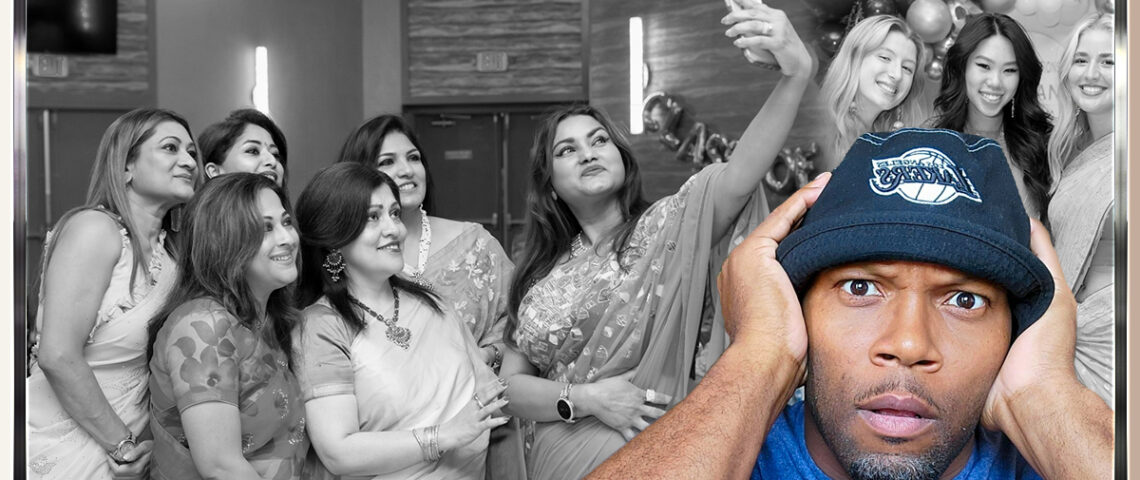
I Shot My First Bangladesh Party & It’s Not What You Think
- Published in Blog, Photography
Questions You Should Ask A Photographer Before Booking
As a photographer, I’ve been fortunate to work for and with many people, groups, and organizations. The experience to date has been nothing short of an amazing ride. However, that ride definitely has had its bumps in the road. What I mean is, there’s this heightened level of anxiety… particularly with new clients. They often exhibit a subtle sense of uncertainty due to not totally knowing what to expect from their photographer. So, after having numerous, similar experiences with my clients, I decided to provide my audience with a solution. A solution that matters. Answers, to all the important questions every client needs to know. If you need to hire a photographer, what questions should you ask them? What questions will put your mind at ease?
I’ve developed a list of essential questions for photographers that I highly recommend you commit to memory. These are the types of questions that will give you the best, most useful advice, and they’ll also help you understand how the photographer approaches their own photography. That way, the next time you run into a photographer you admire or you simply engage with a photographer on a website or forum, you know how to come away with the most helpful information.
Let’s get started with my first question:
- Published in Blog
Should Christian Women Participate In Boudoir Photography?
I am a Christian, and I am also a photographer. Now, I’m sure that you’re thinking, okay, nothing out of the norm here. What I didn’t mention is the fact that I also shoot boudoir photography. It’s not too often that I get asked about how I can be both. But it comes up every once in a while. So I wanted to share with you why I shoot boudoir photography, even as a Christian (or especially as a Christian), and why I believe all Christian wives or soon-to-be-wives should do a boudoir shoot.
Now, I’m not sure where I’d begin or even if laying out boudoir photography in a biblical context would make any difference. I’ll just say that the whole of scripture implicitly points Christians away from anything having to do with lust in thought, word, and deed. Any type of sensuality or nudity apart from between marriage partners shouldn’t even be “named among us”.
Furthermore, in my study and concurred opinion, sexual desire and sensuality between a man and a woman is a gift from God meant solely for marriage. Anything outside of that, according to scripture, is out of bounds. Of course, that’s all in the context of this (nudity/sensuality in photography and in general). Well, enough of that, let’s get started!
I asked a few of my clients if would it be okay for me to use some of their photos to write and illustrate this article.
What is a boudoir shoot?
Boudoir is pronounced Bu-dwah or Bu-dwar, and is technically defined as, “a woman’s bedroom or private room for dressing or resting.” So in the photography world, that involves a portrait shoot that a woman does privately for her man, usually in lingerie. Although the shoot is primarily done as a gift for her man, the women find that the shoot is very pampering and creates a space for her to feel feminine, lovely, and especially sexy. Women spend far too much time comparing themselves to other women they see on Social Media, magazines, or on TV and feeling “blah” about themselves. Especially tired Mommies who feel more like a Mom than a woman, most times.
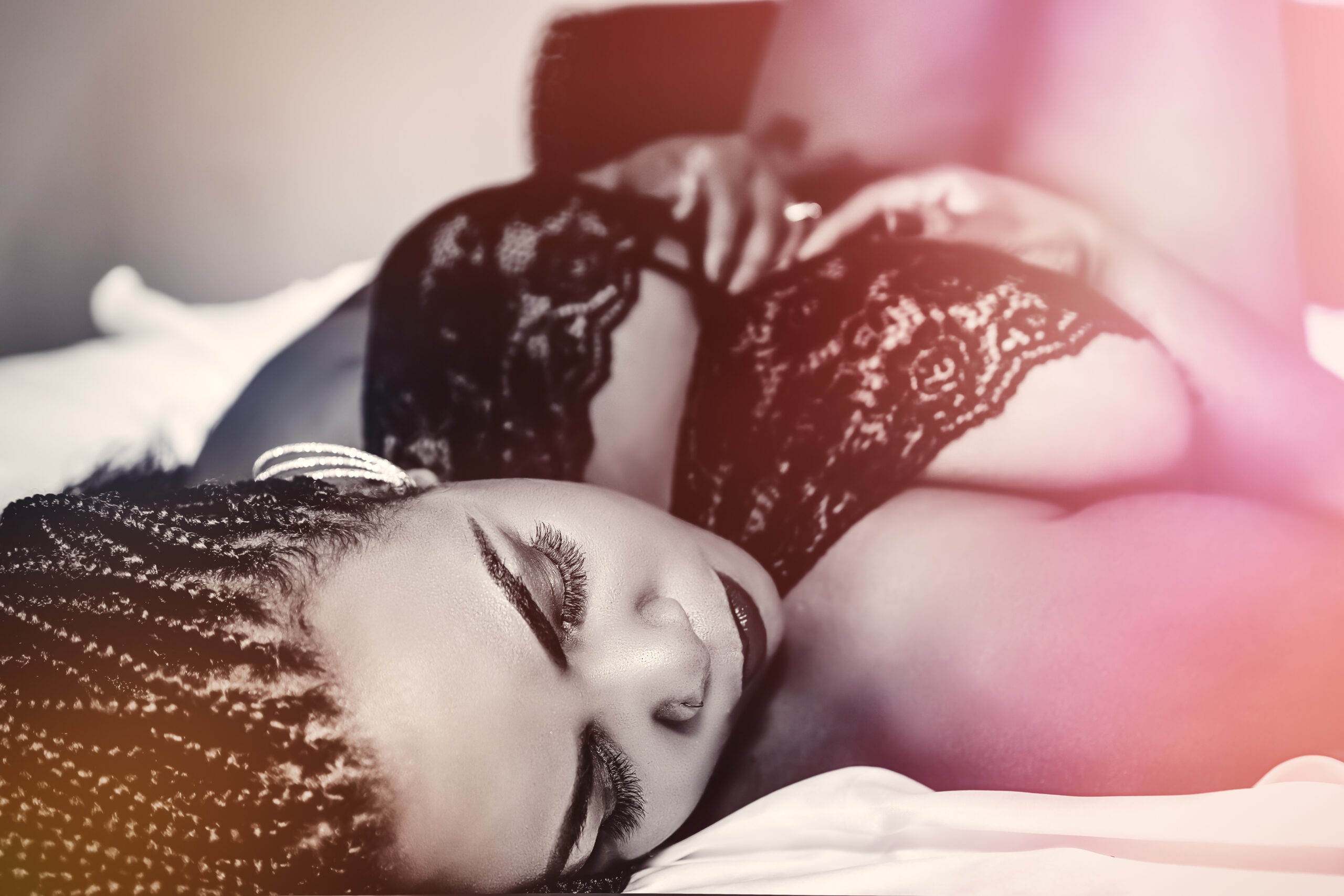
Why should Christian couples be interested in boudoir?
God created men to be highly visual. It’s the way we’re built. I once heard a pastor refer to a man’s brain as a Rolodex, whereas men, in general, are bombarded with imagery of sexy women all the time, and no matter how committed men are to looking away to avoid lusting after the women in those images, it’s inevitable that some of those images are going to get in, and even pop up from time to time. And, whether he knows it or not, he remembers them. How great would it be if a man’s memory was chalked full of lovely images of his wife and the majority of the images popping up in his mind were images he could cherish and feel good about? I believe that boudoir photography is best used in the context of marriage. I think any man would be delighted that his wife (or wife-to-be) would think enough of him to give him a gift that takes a lot of courage and love to do.
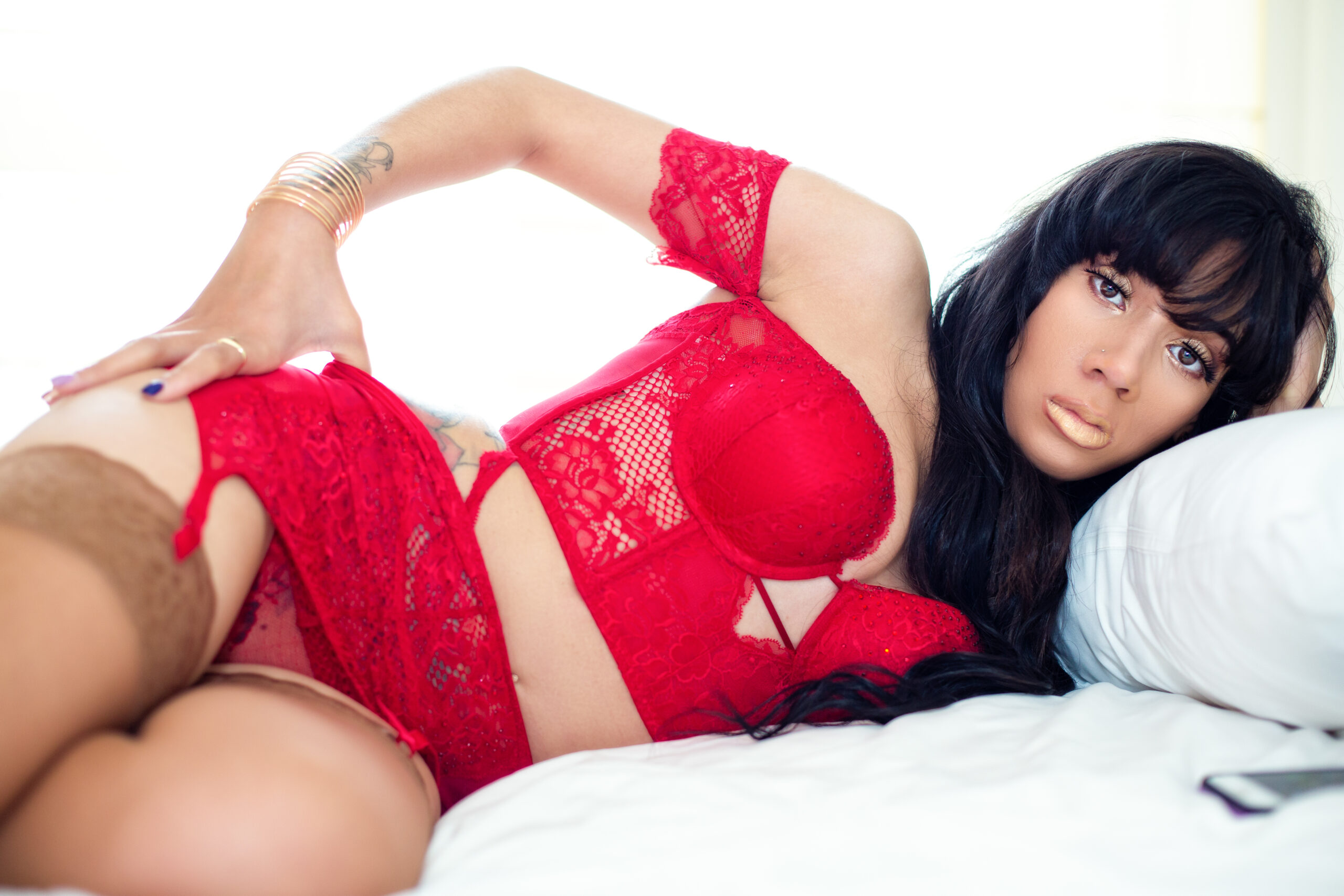
The other point to consider is that in a healthy, Christian marriage, a woman should feel sexy, desired, and appreciated for her body even with its imperfections. Obviously, there is a lot more about her to be appreciated, but that’s a post for another day. When a woman doesn’t feel good about the way she looks, she doesn’t bring to the marriage the needed energy that can help fuel true intimacy. A boudoir shoot can give a woman that much-needed confidence. It’s so amazing what a little sexy confidence can do for a marriage.
The Who, What, When of it all…
The photos are an amazing gift to give to a Groom on the wedding night. Valentine’s Day and wedding anniversaries are other occasions when a boudoir shoot would be a very special gift.
There are a lot of amazing photographers to choose from for your shoot and you should find the one that is the best fit for you. If you find that a female photographer would make you feel more comfortable, many would happily welcome you into their studio. Or, if you’re okay with a male photographer, my style is very conservative, as far as boudoir photography goes, so if you are more on the shy side or you just want to keep things tamed, I’m the photographer for you! My images are sensual, beautiful, tasteful, and not over-the-top sexual. Although you can choose how far you want to go, nudity-wise. Most of my clients prefer to wear lingerie or to do what I call “implied nudity,” where you aren’t wearing much of anything, but all your girl bits are covered by your arms or legs or with sheets.
Will my photos end up on your website?
It’s fantastic when a woman feels comfortable sharing at least a few of her photos on my website so that other women can relate and be encouraged to do a shoot that will enrich her marriage or self-care. However, it’s completely understandable when a couple wants the boudoir photos to be for his eyes only and I respect that decision and would never share your photos without your permission.
If you are ready to schedule your shoot, or if you have any questions, please contact me! I’d love to talk about it more with you.
TO START OFF: WHAT IS AN EMPOWERMENT SESSION?
Boudoir is traditionally known as a style of photography that focuses on female sex appeal. It typically includes lingerie, a bed, and some slightly raunchy undertones. EMPOWERMENT sessions are my way of redefining the boudoir, while still keeping SOME of the aspects of the style.
So what is an empowerment session? It is an expression of your self-love. Each session is unique and tailored to who you are, and how you feel comfortable expressing your sensuality, self-love, and confidence.
I love to focus on details during these sessions. The little pieces of you that make up the full picture of who you are. I create a space for you to be authentically you; to break down the stigma and barriers around being natural and comfortable in your own body.
Empowerment sessions are a uniquely personal experience, that helps you find new ways of embracing the powerful body that carries you through life.
Learning to accept your beauty in your most natural of states, is transitional. With that said, everyone has their own preference of how they like their body to look and feel which allows them to view themselves in their best light. This is the time to have a good self-care day BEFORE your session so that your images reflect your most confident feeling self.
These are a few reminders of things you can do to prepare for your session, that you may not have thought of. Trust me, these little things will in some way be captured, and if you want them to look a certain way (for yourself) then these 13 ways you may not have thought of preparing yourself, will come in handy!
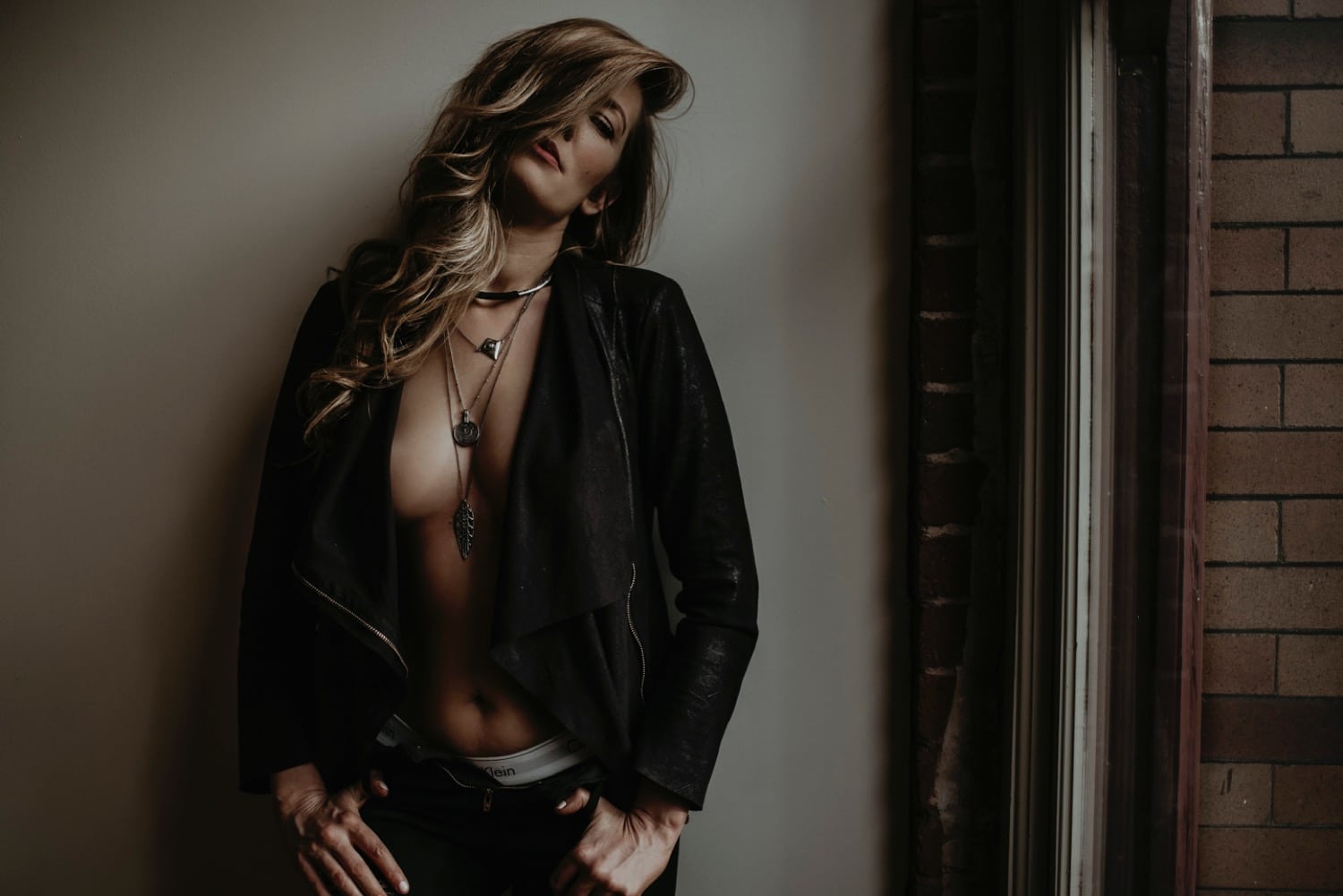
1. CLEAN AND SHAPE YOUR NAILS
Your Fingers AND your Toes!! They are both important. I love to grab close-ups of your hands connecting with the pieces of you that make you who you are. As for feet… Well, those usually aren’t the focus BUT they often make an appearance. You don’t want to have cracked nail polish and half-broken nails distracting you right from first glance!

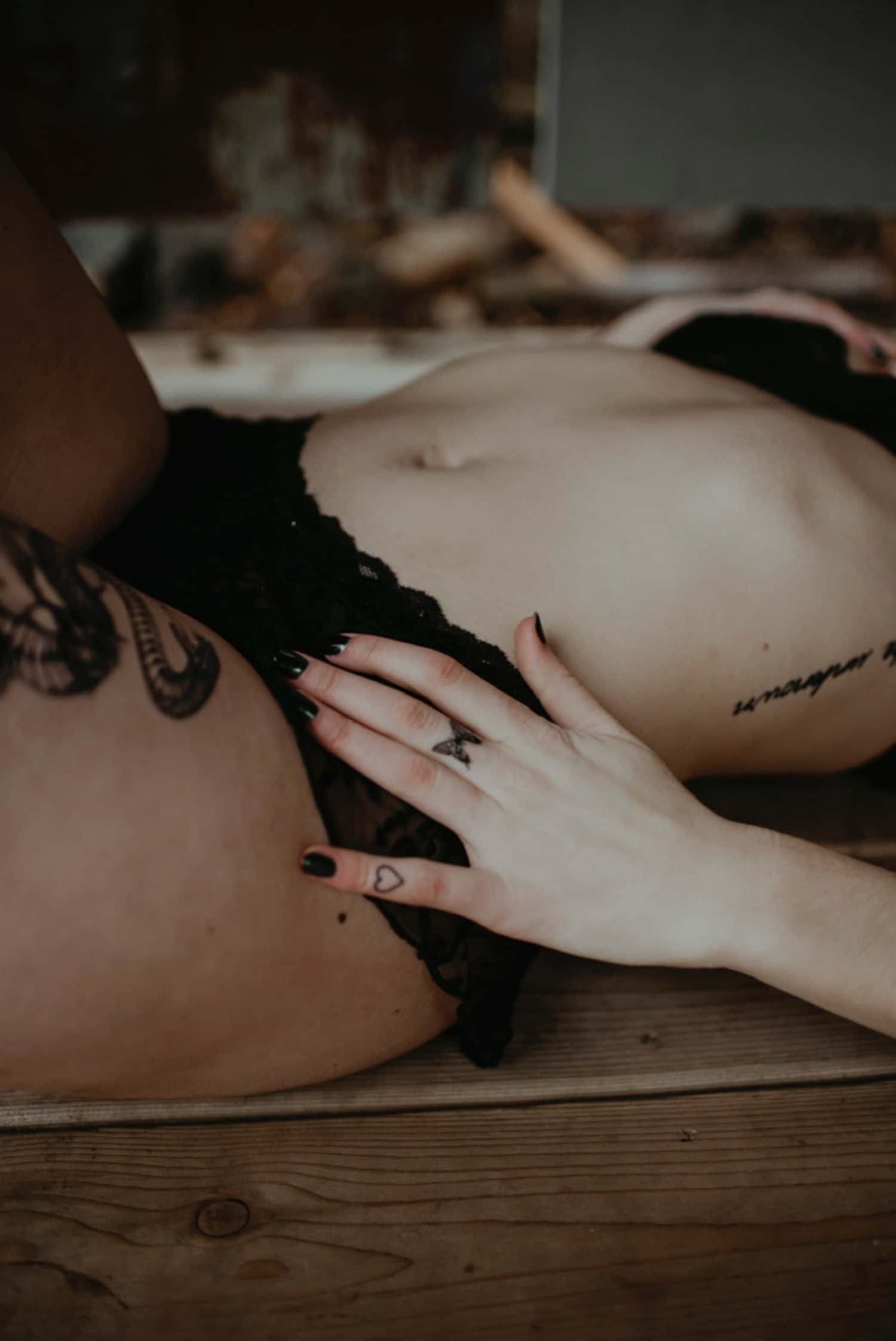
2. CLEAN THE SOLES OF YOUR FEET
Once again, we’re on the feet topic! I know, not appealing BUT your feet will end up featured in some of your photos! Especially the ones with a focus on that peachy boottyyy! Trust me, you don’t want to have dark dusty feet from walking around barefoot! Either take a bar of soap or a baby wipe to those bad boys and let’s pretend we didn’t spend so much time talking about feet…
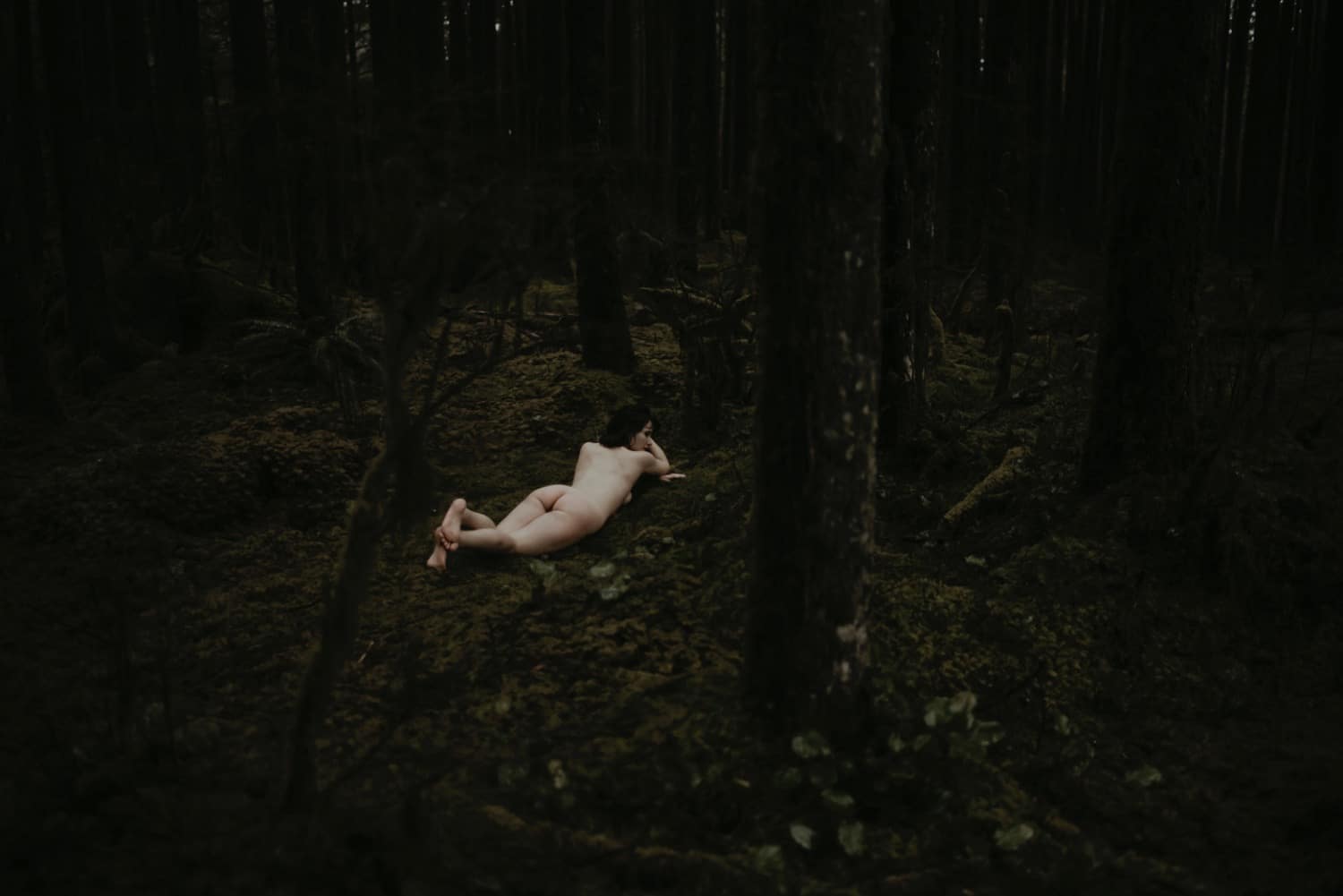
3. TAKE THAT HAIR TIE OFF YOUR WRIST!
Okay seriously, this is one of those little details that ALWAYS gets overlooked. Heck when I start a session, sometimes it takes me a few shots before I even notice! Hair ties are not pretty accessories, we don’t want those in all of your photos! Trust me, your wrists will be in a lot of images, so throw that thing anywhere but on your body and let’s get started.
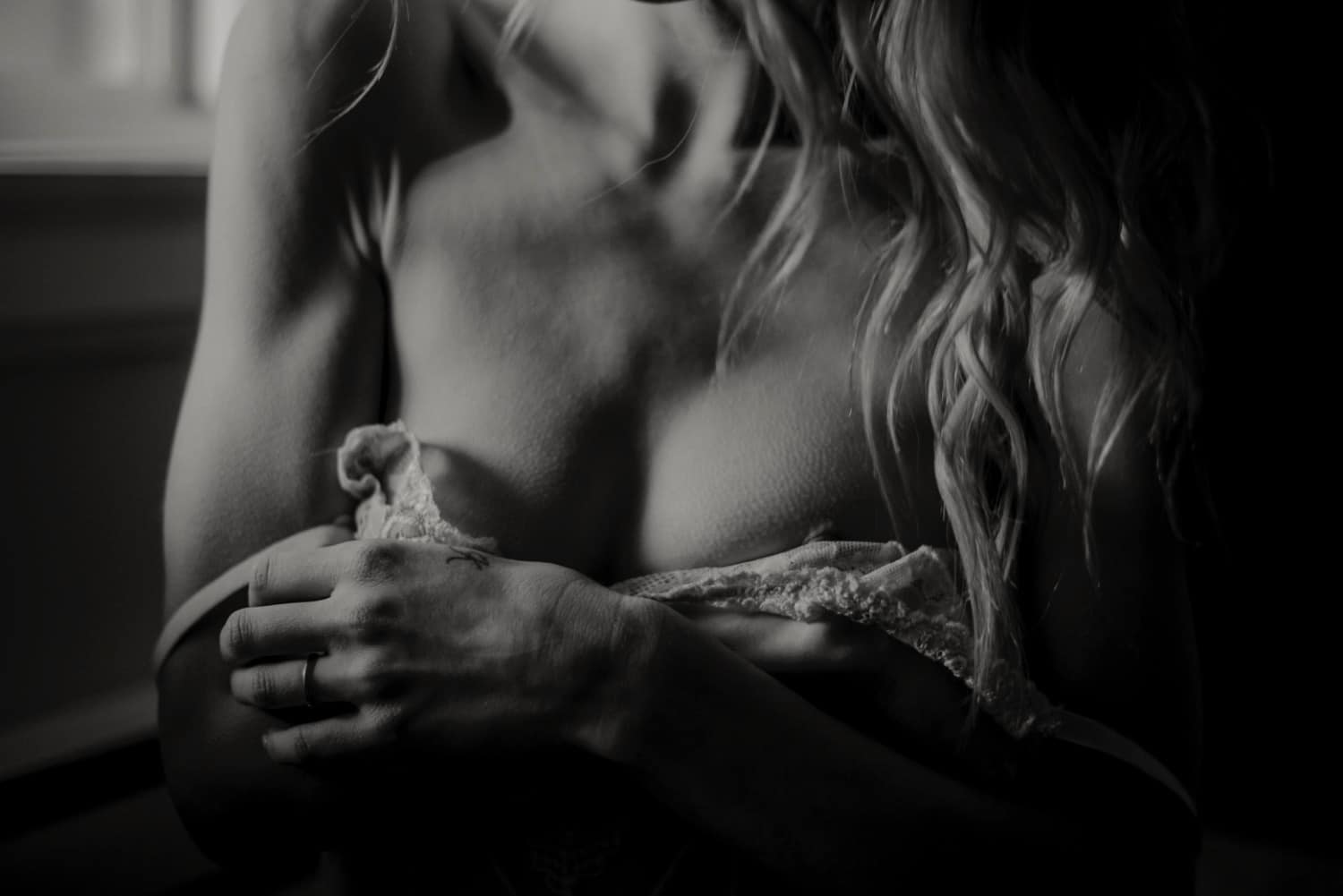
4. DON’T WEAR RESTRICTING CLOTHING BEFORE YOUR SESSION
Trust me on this one pleasseee.. If you wear restricting clothing before your session, you WILL have lines imprinted on your body! I did a session where a girl had lines all over her booty! It took me hours to edit them out of every booty pic. Save your photographer’s life and wear loose-fitting, comfortable clothing before your boudoir or empowerment session.
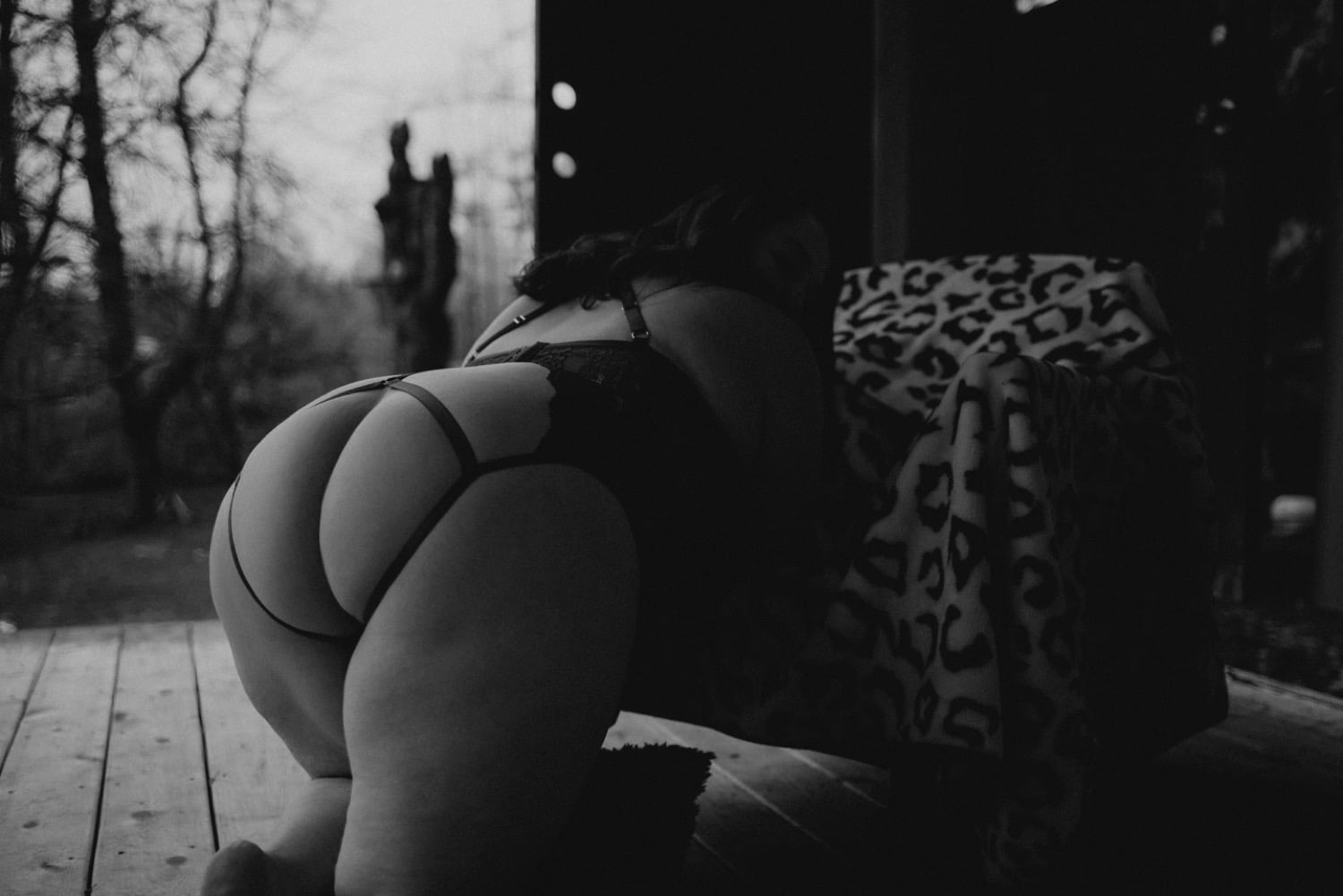
5. DON’T CUT OR DYE YOUR HAIR LESS THAN 5 DAYS BEFORE YOUR SESSION
You may be thinking this is a weird one, but your hair needs time to settle after a big change! If you don’t wait, your hair will not be relaxed in it’s natural shapes or directions. And who wants to have pieces sticking up or into their face? I know when I get my front bangs cut, it takes a little while before the edges stop flipping outwards and actually lay on my face properly. As for color, you could have dye leak onto your skin around your face/neck/hands, etc. Yes, photographers can edit and manipulate images in posts, but it takes a lot of work to change things like that in every single image. And some things just simply cannot be done in photoshop. Plus most natural-based photographers (such as myself) are really not that skilled in photoshop because our goal isn’t to change things about people, but rather to capture what is true and raw.
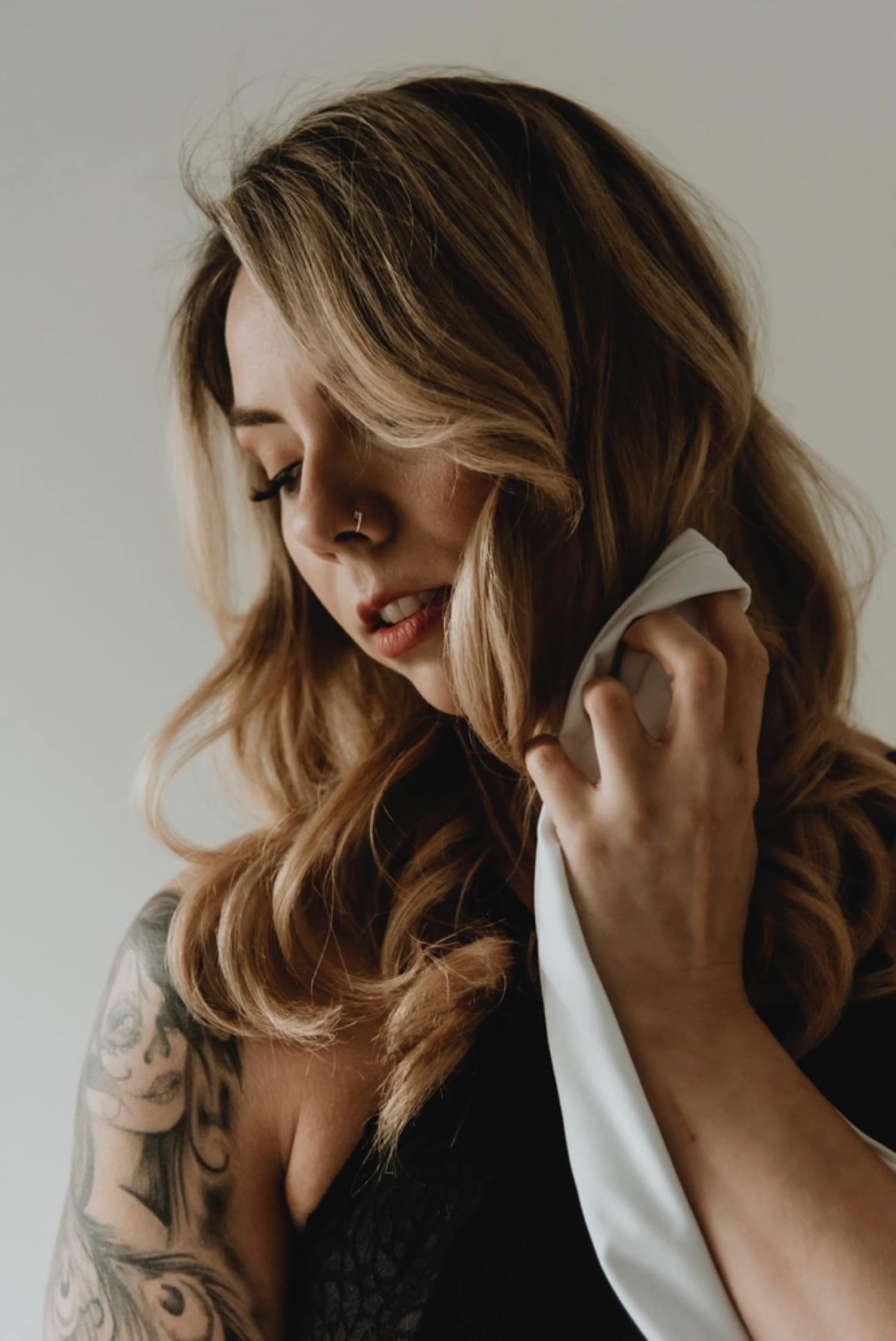
6. STAY AWAY FROM SPRAY OR SELF-TANNER LESS THAN 7 DAYS BEFORE YOUR SESSION
I know that there are some people who like to add a little spice to their skin and that’s totally fine! It’s your body, you do you boo!! BUT just be wearing off when you do so. Plan ahead and add your color early. This will ensure a couple of things.
1. Your tan won’t rub off your surroundings.
We will be rolling around, twisting, arching, crawling, etc. If your ran runs onto the bedding, carpets, or client wardrobe, that can mean a lot of extra cleaning after your session and maybe some ruined materials.
2. Maybe you missed a spot?
Self-tanners especially, can sometimes turn out uneven or with missed spots. Leaving this time before your session to get your tan done, can ensure that you have time to fix any mistakes!
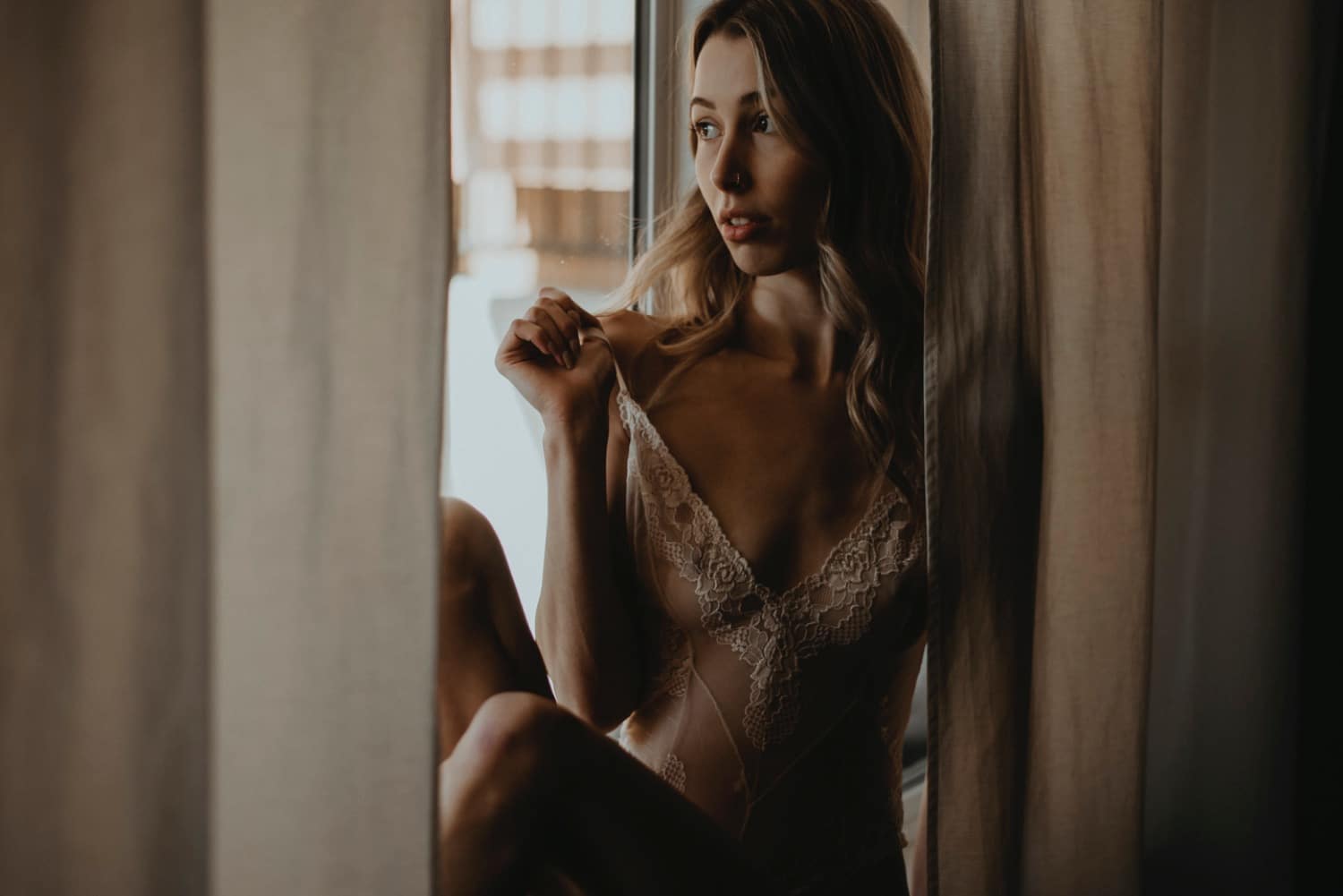
7. TOUCH UP YOUR EYEBROWS
This one is not for everyone! If you like your eyebrows natural and you don’t pluck, wax, thread, or anything else, then more power to ya babe. But if you are someone who likes to get those bad boys shaped and pampered, you will definitely want to get that done a day or so before your empowerment/boudoir photoshoot. For waxers/threaders, go at least 3-5 days before your session so that you aren’t red or puffy!
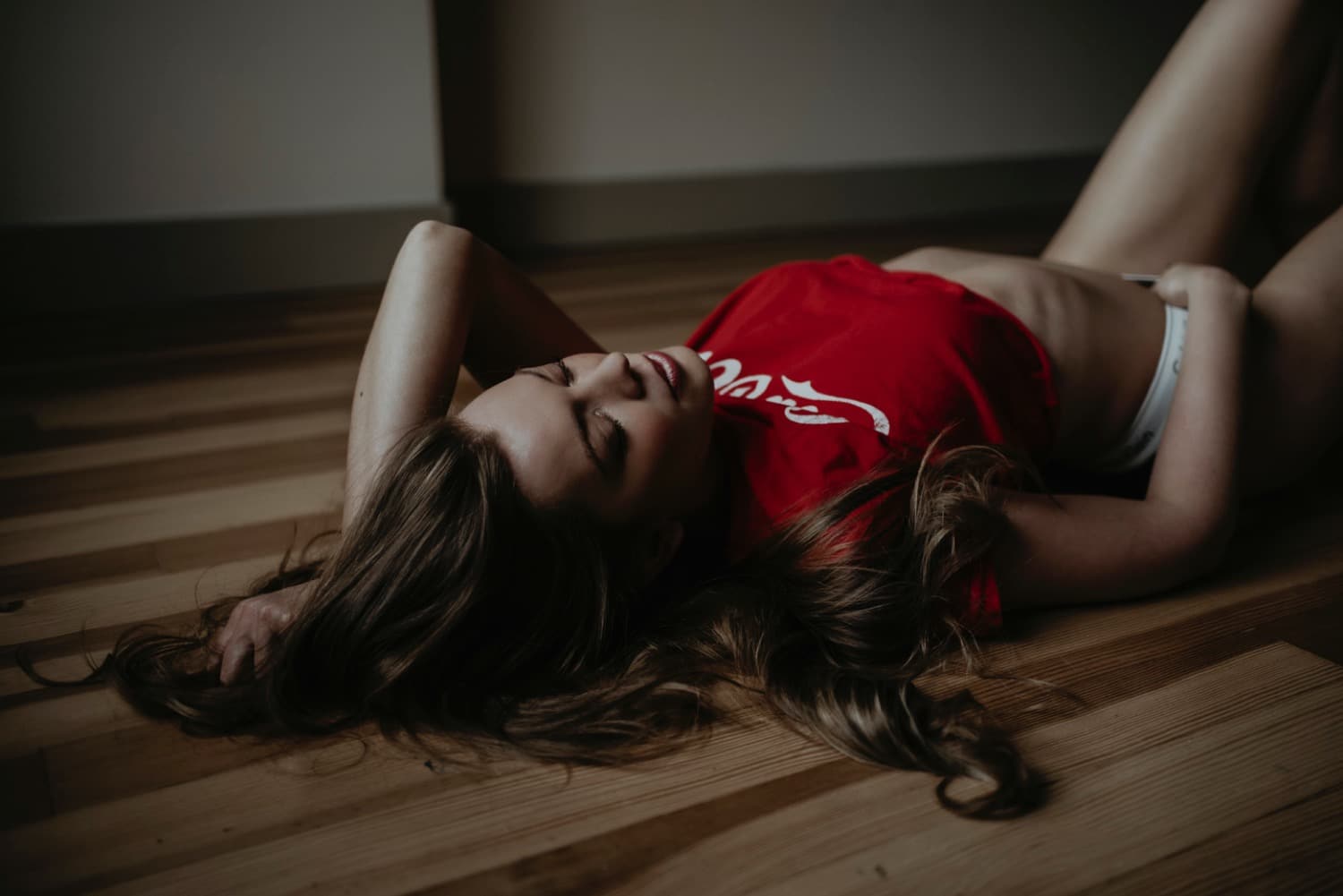
8. DRINK LOTS OF WATER THE DAY BEFORE
Honestly, we should all be drinking lots of water daily but sometimes we just get too distracted and busy with life that we don’t. But drinking water has so many benefits and can really change the way you look in your images. Drinking water before your session gives you beautiful dewy and glowing skin. It may sound counterproductive, but in reality, drinking plenty of water can help keep bloating down because it naturally flushes our systems of excess water and sodium that we might retain, helping to keep bloating down.
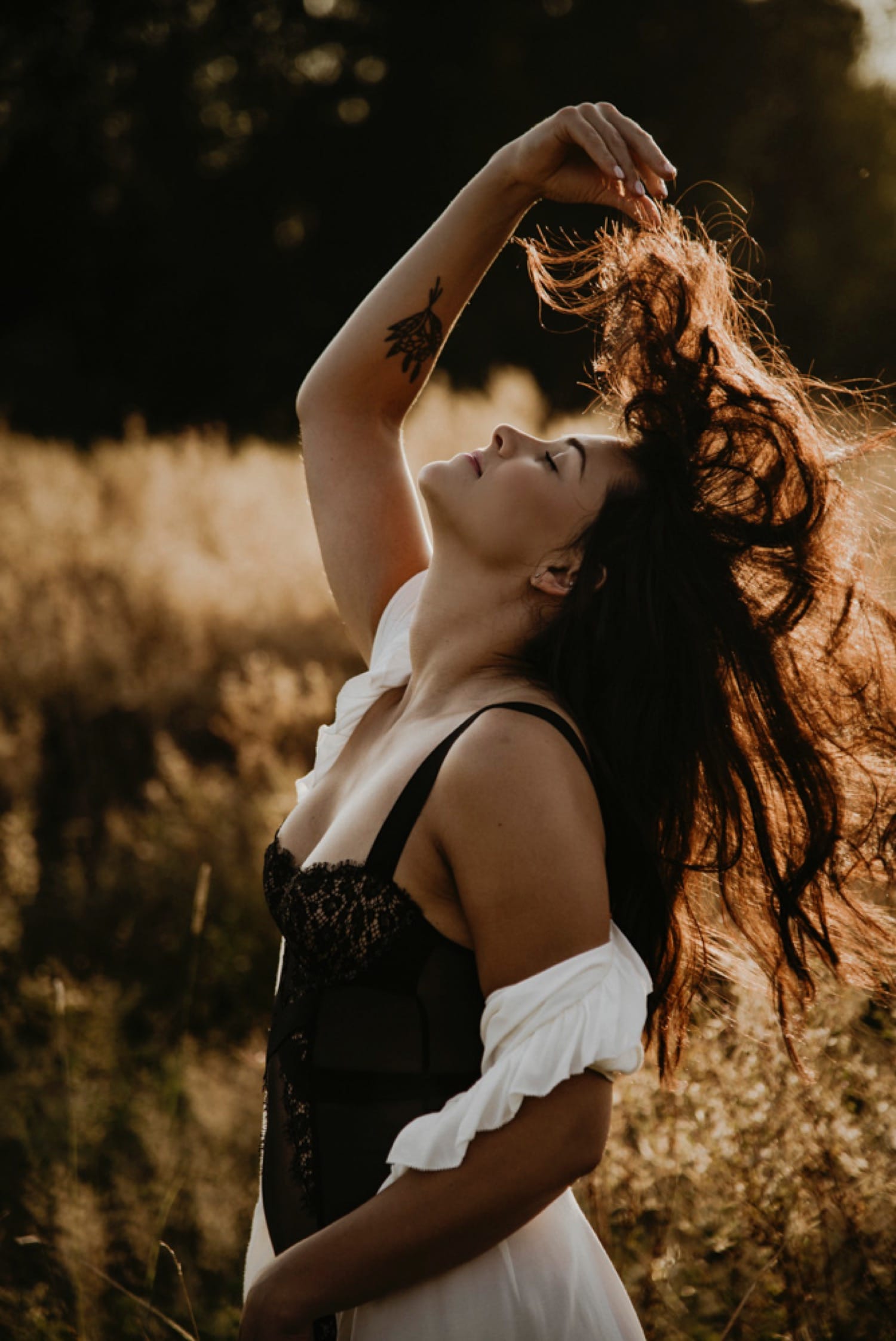
9. DON’T EAT OR DRINK ANYTHING WITH DYES ON THE DAY OF YOUR SESSION
This is a huge one actually. Eating foods with dyes, especially orange and red, will stain your mouth! It is really not a flattering look in your final images. Stay away from any pasta, deep-dyed candies, colored drinks without a straw, etc. as much as you can.

10. IRON YOUR OUTFIT
If you are wearing something that wrinkles really easily, iron it before your session! Wearing wrinkly outfits is really not the look. Boudoir and Empowerment sessions are meant to be seen as soft, sensual, and empowering. There is nothing soft about a million lines all over your beautiful silk slip or robe.
If you have a piece that you are dead set on wearing to your session, and it is made out of a fabric that wrinkles easily, iron it before your session. It will lay more elegantly on your body.

11. STRETCH
Make sure you stretch because babe this will feel like a workout! You will be arching your back and pushing that booty out more than you ever have before. You will also be hanging out on your tippy-toes a little bit so stretch those legs! Stretch before AND after your session. Your body will ache for a little bit, but it is that kind of ache that feels good – like that refreshing achy feel after a workout.
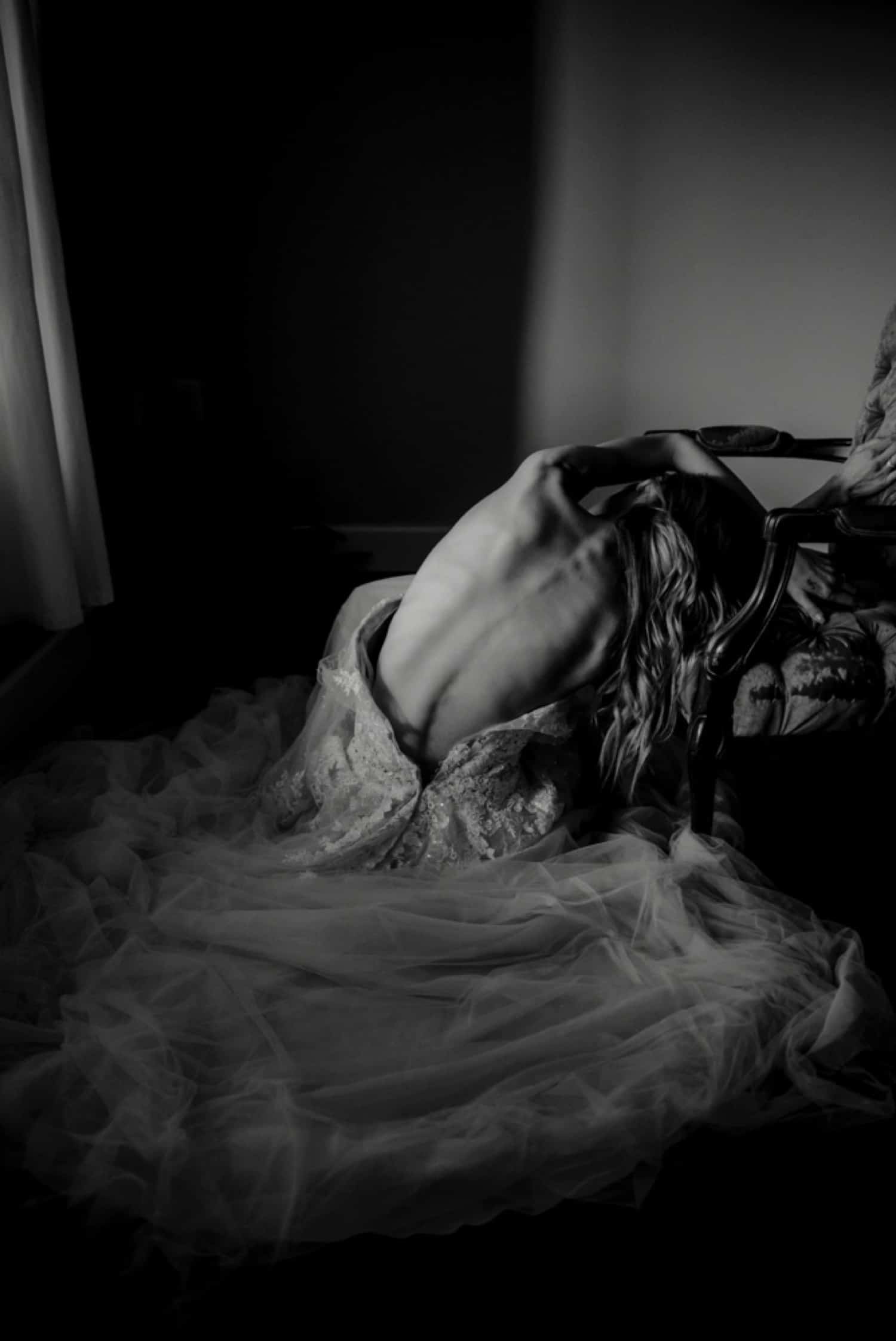
12. TRY USING GEL OR SPRAY DEODORANT
To avoid white pilling/buildup in your underarms try a gel or spray deodorant. Your underarms will be seen! This means that sometimes you will have your arms up, in your hair, over your head, across your body and anywhere else I think will look creative and sensual.

13. EAT SOME DAMN BREAKFAST
Not eating in the morning will NOT help make you look thinner during your session!!!! Please eat food before your session. If you don’t, you are likely to end up feeling sick and lightheaded during your session. Remember, this isn’t just laying down relaxing, you will be moving around and holding positions – basically doing yoga. Working out without food and water in your system is unhealthy and can cause some serious safety issues.
Plus, who tf doesn’t like breakfast foods? Start your day right and fill that hungry tummy!
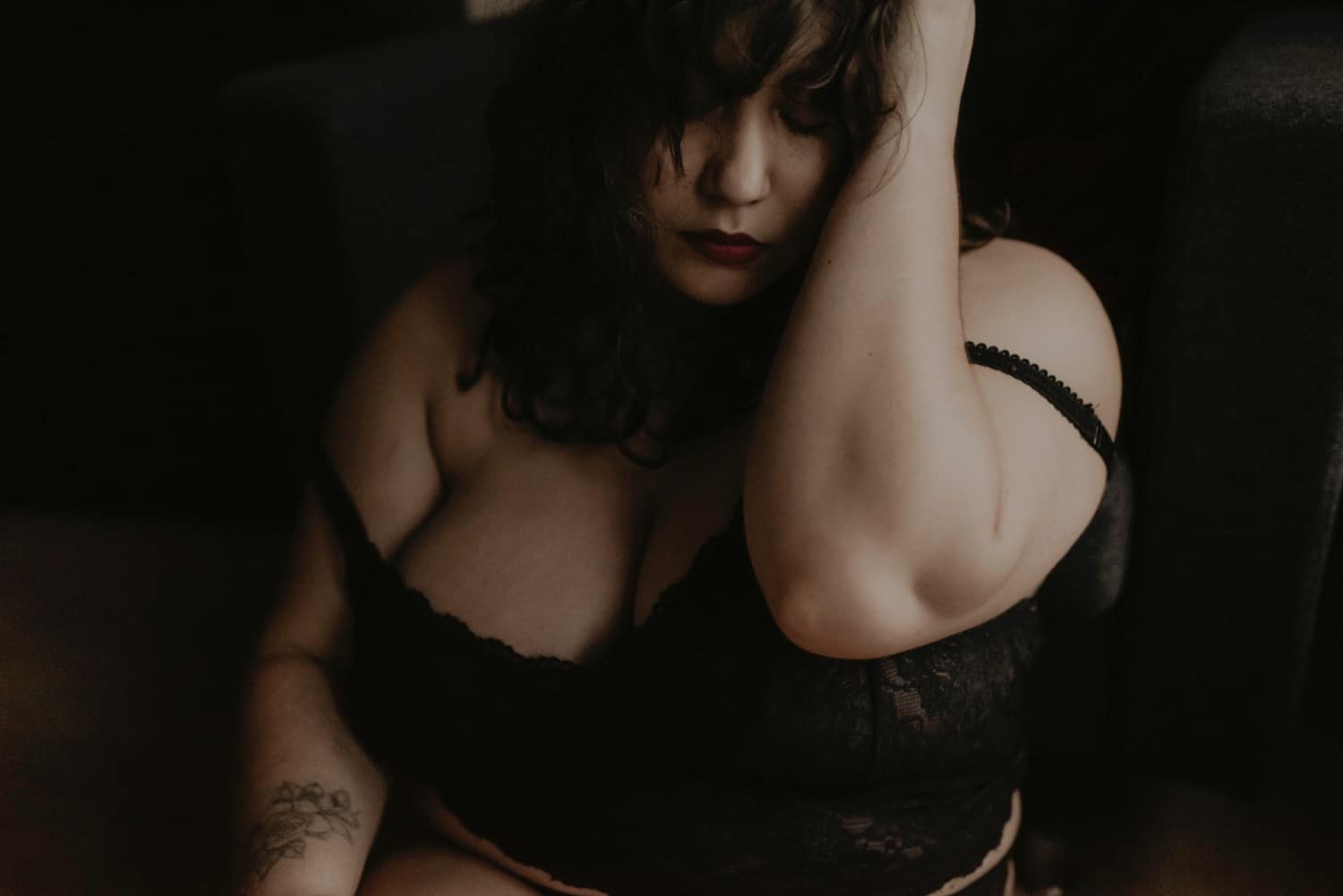
BONUS. BRING YOUR FRICKEN BOO
Empowerment sessions are ultimately about love. So how about instead of just expressing your self-love, why don’t you try sharing the experience with your significant other and capture your beautiful, intimate, love! Steamy couple’s sessions are so personal. Your connection is important and something you will look back upon someday, wishing you had captured more of. Steamy sessions are a whole new level of empowerment. You are in your natural and comfortable state WITH your loved one. You share these intimate moments together on a daily, so why not create beautiful art out of your love?
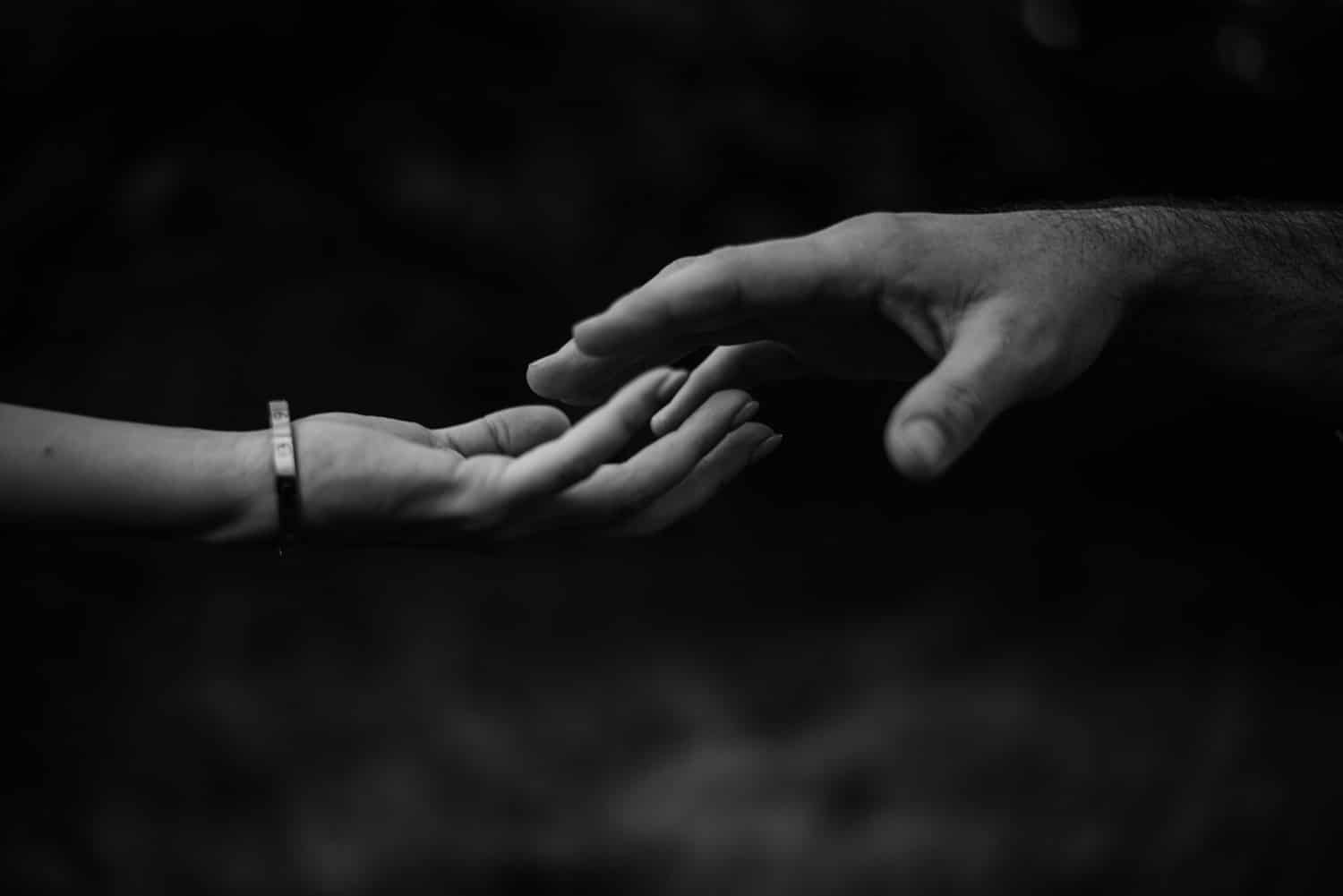
NOW GO ROCK YOUR BOUDOIR / EMPOWERMENT PHOTOSHOOT LIKE THE BOSS BABE YOU ARE!
[/ultimate_heading]- Published in Blog, Photography
Building A Successful Brand
There is no one definition that actually captures the essence of brand building in its entirety. Many people think that brand building is all about communicating and exposing your brand. That is just one side of it. The best way we can define it is that it is a process of creating value to consumers. It encompasses all things that consumers know, feel, and experience about your business in its entirety.
Having defined brand building, let’s take a look at 3 popular types of brands and what they stand for.
- Service brand- this brand is built on knowledge, culture, and experience that one has with the service delivering agency/company/people. Think of Geek Squad or Molly Maid.
- Retail brand- this brand is built on a mixture of products and service experience. Think of Chick-fil-a, Kroger, or KFC
- Product brand- is built on the experience that one has with a specific product. Think of Nike, Ford, or Sony.
Having looked at the 3 popular types of brands, let’s now proceed to look at steps involved in brand building.
1.)Define Your Brand
The first stage in brand building is defining your brand. This is a very critical step as it ultimately determines what your brand truly stands for. When defining your business brand, you should create a checklist of its core strengths. Similarly, if you’re defining a personal brand, you should look at the skills and expertise that you possess especially those which stand out. On the same token, you also need to know what your brand stands for and what is important for your brand (brand values). Your values should in one way or another show that you are contributing to environmental, social, and economic well-being of consumers. You may not realize some of these important aspects of brand building immediately, until you look at them objectively.
2.)Differentiate and Position Your Brand
Before embarking on brand building, you have to take time to differentiate it so that you can attract attention and stand out from competitors. To differentiate your brand, you have to create a unique advantage in the mind of consumers not merely getting attention by brand building colors or logos or other superficial elements. Once you come up with a unique value proposition, you should use a good branding strategy to position your brand in a way that will help consumers see and appreciate the greater value of your brand over competing ones in the market.
3.)Build and Expose Your Brand
As I indicated earlier, brand building is not a one off thing. Building a unique and powerful personal or business brand takes time and consistency. To build your personal brand, you have to keep reinforcing your values and skills by taking up new roles and assignments that will give you more exposure. Alternatively, you can use promotional channels, blogs, forums, and social media (LinkedIn, Twitter and Facebook) to create a voice for your personal or business brand.
When building your brand, you should also endeavor to develop brand personality (what people know, think, and say about you). This is what drives or motivates people to identify with and engage with your brand. The truth is; if you execute your brand building strategies consistently, then you will easily establish a pattern that will forever be associated with your brand name.
4.)Personalize Your Brand
If you want your brand building campaign or brand to be successful, then you have to personalize it. It is important to give your brand an identity. Let consumers see and experience the personality of your brand in its entirety. Look at your brand as something that a consumer wants to identify with pretty much as they would with their favorite cars, cellphones, or computers.
As you engage in brand building, you should also invite customers to be co-creators of brand values so that they can feel that they also own it and relate with it. Top brands encourage consumer-brand interaction by personalizing products to meet the needs and preferences of consumers. When you personalize your brand, you give consumers reason to participate and engage with your brand for a lifetime.
5.)Review Your Brand
Your brand is not static; it will go through a range of motions in its lifetime. Depending on your brand strategies, your brand will either grow in strength, or remain dormant, or recede with time. In the brand cycle, new events, changes, and circumstances bring challenges and opportunities to enhance the value of your brand or re-establish it. All these possibilities should give you the impetus to take charge of your brand building activities.
As your brand name grows, so do the responsibilities and expectations to continue with brand building. The best way of ensuring brand growth is reviewing your activities and evaluating your successes through metrics such as levels of brand awareness and levels of engagements. Regular reviews will help you seize and exploit new opportunities while upholding your commitment to remain true to your vision and brand strategy. It will also help you steer your brand in the right direction and keep it relevant as you move into the future.
As you can see, brand building is not a one off thing. You have to define your brand, differentiate, present it, and review what your brand stands for from time to time. It is very important to be clear about your branding strategies and how you’re going to implement them. You should also adopt brand strategies that will add value to your consumers and help them develop the right impression of your company and what it truly stands for.
- Published in Blog, Marketing, Networking
Dewwond Mapp Photography
The Bottom-Line: With regards to Professional Photography, you absolutely get what you pay for! Inexperienced, non-professional photographers will often make several critical errors during your event. They can not be re-done as there just one opportunity to capture certain moments! Therefore, ask yourself this question: If I could hire a Professional Photographer and know that my images will be captured and kept safe, is this worth it to me? If the answer is “yes” then you have made a wise decision! If the answer is “no” then keep in mind the risks involved in losing precious moments forever.
Here at Kentyla Arts Designs, we run a multi-faceted design company. Non-the-less, we strive with zealous ambition to produce the optimum product in every department. Photography is a huge part of what we do here. And, we understand how detrimental it is to capture the important moment. We have provided services to an elongated list of satisfied clients. We’re on a journey to continuously expand our creativity when it comes to photography. — KAD Founder Dewwond Mapp
Photography is a way of feeling, of touching, of loving. What you have caught on film is captured forever… It remembers little things, long after you have forgotten everything.
— Aaron SiskindPhotography for me is not looking, it’s feeling. If you can’t feel what you’re looking at, then you’re never going to get others to feel anything when they look at your pictures.
— Don McCullinIt’s one thing to make a picture of what a person looks like, it’s another thing to make a portrait of who they are.
— Paul Caponigro
- Published in Blog, Photography
Personalized Stationery Items | Print’s Not Dead! A Short Guide To Help You Rock Your Business Stationery
Personalized Stationery Items | It’s safe to say that the way we communicate nowadays is a lot different than the way our parents used to communicate. It’s a huge leap going from one generation to the next one, and when you think about it, we’ve seen many means of communication change, evolve to keep up with the times, or go completely extinct. We live in the age of emails, smartphones and social networks such as Facebook, LinkedIn and Twitter, after all. So why should you care about stationery items? Aren’t they a thing of a long-gone past?
Not really! Even though the way we use stationery items changed, it doesn’t mean that print is dead. Printed stationery items are still alive and well, and are just as important for your business as ever, if not even more. Your stationery can say a lot more about the services and products you’re providing than you think, and it will oftentimes represent your business and make an impression long before a potential client decides to pick up the phone and call.
Do Your Homework | Personalized Stationery Items
Stationery is defined as writing materials, including cut paper, envelopes, writing implements, continuous stationery, and other office supplies. Stationery included materials to be written on by hand (e.g., letter paper) or by equipment such as computer printers. Since business stationery covers a wide range of supplies, you’ll want to take a step back and determine the items that you’ll actually use. It doesn’t matter how appealing your stationery items are, or how much you invested in them, if you don’t actually use them.
Who, What, Where, Why? | Personalized Stationery Items
Let’s get the basics out of the way first here – the point of stationery items is to provide your potential clients with all the information they need at a given time. And just like each stationery item will be slightly different, so will its intended purpose – some items will only provide your potential clients with your contact details, like your business cards, while others will allow you to include other information, such as a list of the services you’re providing, which means you’ll want to figure out the most appropriate contact information for each item, as some won’t be large enough to fit all of them.
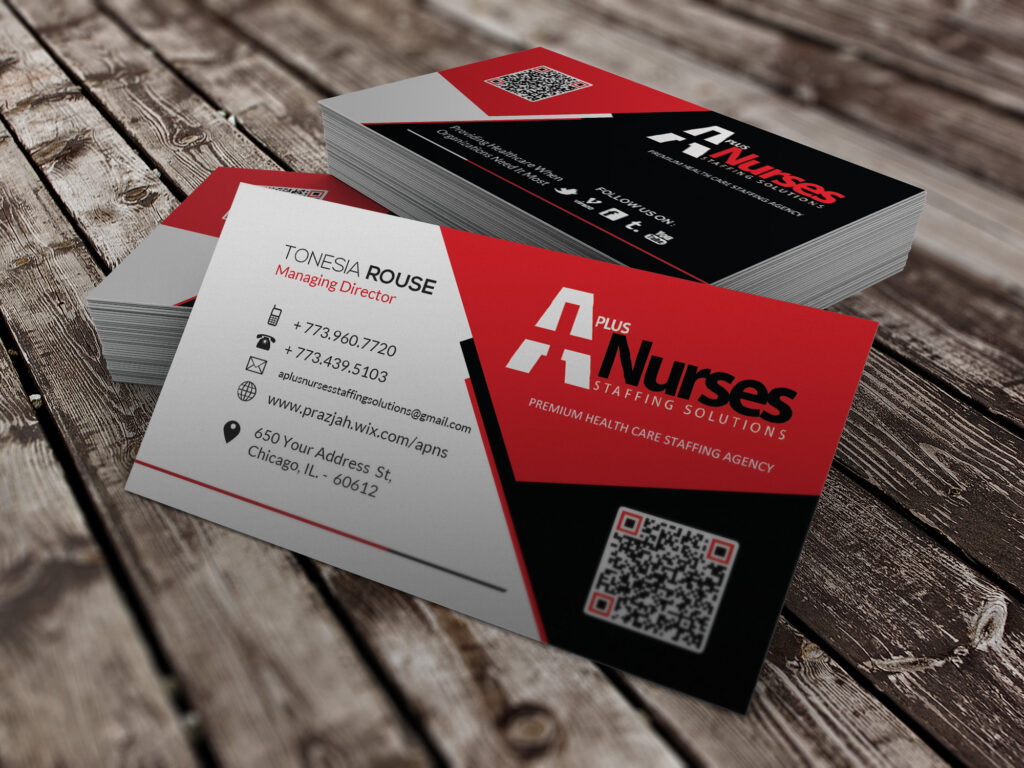
Don’t Be Afraid Of Using Color | Personalized Stationery Items
Even though using too much color in your stationery design can add to the cost of printing, keep in mind that color can be an incredibly powerful tool when used right – it can help make your stationery stand out from even the largest pile, and it can actually guide the reader’s attention to the most important information. However, when choosing the color scheme, make sure you choose the one that matches your other branded materials, and that the color actually work well together.
Never Underestimate The Power Of Simplicity | Personalized Stationery Items
You’re investing a considerable chunk of your budget into the stationery for your small business – and you want to make every inch of it count, so you pack your stationery items with all the information that comes to mind. However, this might backfire and end up only overwhelming your potential clients. Never underestimate the power of white space in design – it can be used to organize long paragraphs of text into digestible chunks and help you emphasize the important information.
Ensure Readability | Personalized Stationery Items
You want your stationery items to stand out and be memorable, sure, but you don’t want to put their visual appeal before the functionality. At the end of the day, your stationery items are a delivering mechanism, whether for your message or just the contact information, and you want to make readability one of your top priorities. No matter how interesting that calligraphic font you like is, if it’s difficult to read, instead of straining their eyes, your potential clients will simply move on and throw your piece of stationery in the garbage.
Invest In High Quality Stock Paper | Personalized Stationery Items
Humans are tactile beings, which means the quality of the paper you use for your stationery items is just as important as the design itself – a thicker paper often feels more luxurious and can help portray your business as an established and reliable company, while a thinner paper can seem tacky and cheap. Is that a message you want to send to your potential clients about your products and services? Think of your stationery items as you would of a handshake – no one likes limp handshake, so why would they like limp stationery items?
Double-Check Everything | Personalized Stationery Items
When you decide that the design you came up with is just perfect and you’ve chosen the right paper for each stationery item, it’s best to order a test print to make sure everything looks just as good on paper as it does on your computer screen. Make sure the colors are just right, that the fonts aren’t too small, that there are no typos, and that all the contact details are up to date and correct.
If you’re between jobs, moving between two locations or simply changing your phone number, don’t have your stationery printed before you have all the relevant information ready – even the most appealing business card won’t do you much good if you scratch information on it and write down a different phone number with a pen before handing it to a potential client. As great as your business card might be, this will only portray you as a bad professional that doesn’t care about their business image.
- Published in Blog, Publications
Using An App To Enhance Your Business
The Importance of Mobile Apps for Your Business
The customers in today’s world are on the move and they’re using mobile application platforms to get there. Whether they use mobile phones, tablets, or other mobile devices they have all the information they need. That’s why mobile apps are so much important in today’s market.
You need to understand that mobile apps allow customers to have all your information at their fingertips. Also, it is important that your app works on multiple mobile application platforms. But for beginning, start with one platform.
No matter what your business is, a mobile app can help you get and retain customers., and that’s a fact. We all know that the first place customers go to search for a product or service is online. If your business is available online, and plus you have an app that users can download to their devices, your business will make really good impression. At a glance they will be able to see and open your app and purchase from your business.
Here are some of the biggest benefits of mobile apps for businesses. You can:
- build loyalty
- reinforce your brand
- increase your visibility
- increase your accessibility
- increase sell-through
- increase exposure across mobile devices
- connect you with on-the-go consumers
There are more of course. These are just some of the biggest. As you can see, benefits can be huge.
Not only that your business will have benefits, but your customers as well. Here are some of the benefits of mobile apps for your customers. They can:
- easy access to your inventory
- get notifications of special events, launches, etc.
- have one-touch access to your contact information
- get directions to your location from wherever they are
- make fast, seamless appointment scheduling
Until now, it should be really clear – the future of your business depends on your ability to get your business implanted on the phones of customers all around the world. You need to go mobile and be prepared to grow.
Important fact to note: Promotional email messages receive about a 4% read rate. PUSH notifications 97%.
Not only will your mobile app be a cool marketing tool (allowing you to say things like, visit our website to download our free app!) that will help get people returning to your website, but it will allow you to engage with your customers in a whole new way.
The Importance of Quality Logo Design
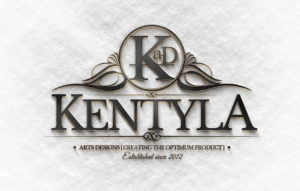
More than 40 years ago, Nike bought its logo from a college student for $35.
When companies hear that logos can come with such a low price, they often don’t understand why we might charge more than that.
Non-designers also sometimes think that a logo shouldn’t cost much because of its scope — since it’s just one measly design, it should cost way less than, say, a website.
When KAD offers a logo design proposal, we present every option available, but our statement is this:
“You’ll use this logo everywhere.”
Logos are used hundreds — if not thousands — of times. Potential clients must understand that the logo will appear on everything from websites and business cards to email signatures and social media profiles. Depending on the organization or business, the logo could end up on movie screens or billboards, too.
Kentyla Arts Designs is most certain to communicate to potential clients the important fact that, because a logo is so widely used, it’s incredibly valuable. It is not just a simple file.
“It takes time to make the perfect logo.”
People tend to think that a skilled, professional designer should only need a few hours to throw a logo together. Non-design types don’t always understand all the intricacies of a quality logo design.
There are a few reasons logos take a long time.
- A designer should spend some time getting to know a company’s values, goals, and mission to design accordingly.
- Because logos are so important, the revision process is often lengthy — which is expected and OK, but important.
- Finally, the company should want the logo to be pixel-perfect. And perfection takes time.
“It’s more than just one image.”
Some clients seem to think their logo design will come in one 300-pixel square. They don’t always understand that a professional logo design will result in a folder full of different sizes and formats of the image.
Here at KAD, clients are educated and made aware of a list of images they’ll get:
- They’ll receive full-color, one-color, and black-and-white options.
- They’ll get horizontal, vertical, and square designs.
- They’ll get colorful backgrounds and white backgrounds.
- They’ll get images with and without the company name.
- KAD will also throw in a style guide, detailing the specific colors, fonts, and other elements the brand could use in other projects moving forward.
The above list has option packs that do not comprise of all the above. None-the-less, our clients understand that the more quantified the final product, the more value it will appear to have.
“A Brand You Can Trust.”
Our experience will show in our design. And, we have a clear understanding that, clients don’t care about your personal experience — they just care about their logo. However, we will always take the opportunity to explain to them how our expertise will affect their corporate image. Hiring an amateur will result in an amateur-looking logo — which won’t reflect well on their company. On the other hand, hiring an experienced (albeit pricier) professional will give them better results. Ultimately, they’ll look more credible, authoritative, and trustworthy.
“It’s not just an image — it’s a copyright.”
When KAD sends over the final logo design, the client will gain copyright ownership of the image (depending on your agreement). Oftentimes clients are not be well-versed on copyright law. That’s our opportunity to explain the value of ownership. We explain that they’ll have unlimited access — they can use it wherever, forever.
That might not be the case with a less-than-professional (read: cheap) designers. We let them know that the cost of ownership is factored into your fee.
“You get what you pay for.”
Sure, the client could go the way of Nike and purchase a quick $20 logo on some sketchy website or attempt to design their own in Microsoft Word. But there’s a big chance it won’t look as good as a experienced designer could produce.
As a design company, KAD knows more than just how to make something look pretty — we understand how to make a design match your brand’s style and values.
Ultimately, when it comes to logo design, value-based pricing is more important than the time it took to create the design or the complexity of the project. A logo is a company’s identity — it’s invaluable.
- 1
- 2




